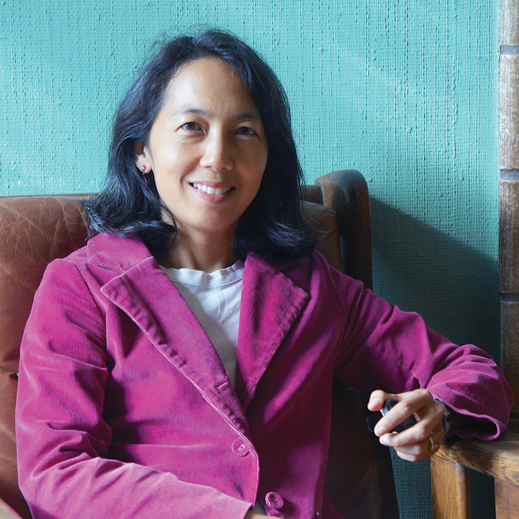Over the past decade, Karen Kho has helped make tens of thousands of homes in the San Francisco Bay Area more energy- and resource-efficient. And her green building programs and strategies are spreading across California.

In 2003, after trying policy-oriented work at federal agencies, Kho joined StopWaste, a public agency that develops and manages resource conservation programs for Alameda County and its 14 municipalities. She’s now a senior program manager, a role that suits her hands-on orientation and strategic goals.
“We’re a public agency, but we incubate projects like a nonprofit foundation,” explains Kho, who holds a BS in development studies from the University of California, Berkeley, in addition to her Institute master’s in city planning. “We look for strategic opportunities and develop tools and resources that can move stakeholders.”
Those stakeholders include architects, developers, contractors, city building officials, landlords, real estate agents, and residents—all of whom have different agendas. The fragmented economics of property development, ownership, and management mean that matters like energy efficiency and water usage are often low priorities. “Nobody has ownership of the big considerations,” she says.
Hoping to address this situation, Kho was one of the moving forces behind StopWaste’s 2005 launch of the GreenPointRated home certification system, which has now assessed more than 40,000 homes statewide for energy and resource conservation, indoor air quality, and other factors, much as LEED certification does for commercial projects. It’s now administered by a dedicated nonprofit, and a recent study found that green-labeled homes in California command a 6 percent price premium, which has boosted acceptance among skeptical developers and agents.
“I was proud of that, not just because of the study results, but because of having helped develop a credible and accessible standard for green homes,” says Kho, adding that the proliferation of local ordinances helped prompt California to adopt the nation’s first statewide green building code in 2010.
Last July, her team worked with property owners, managers, and contractors to launch a rebate program for resource-conserving upgrades to multifamily homes. “Within six months we were overenrolled, and now over 32,000 units have been or will be upgraded,” she says.
Kho, husband Robert Schorlemmer, and their two children often visit family in Spain and Germany. She sings mezzo-soprano in small choral and a cappella groups but says her real passion is for “shaping the built environment.” She adds, “That’s what led me into green building.”
Keep Reading
Most Popular
Large language models can do jaw-dropping things. But nobody knows exactly why.
And that's a problem. Figuring it out is one of the biggest scientific puzzles of our time and a crucial step towards controlling more powerful future models.
How scientists traced a mysterious covid case back to six toilets
When wastewater surveillance turns into a hunt for a single infected individual, the ethics get tricky.
The problem with plug-in hybrids? Their drivers.
Plug-in hybrids are often sold as a transition to EVs, but new data from Europe shows we’re still underestimating the emissions they produce.
Stay connected
Get the latest updates from
MIT Technology Review
Discover special offers, top stories, upcoming events, and more.